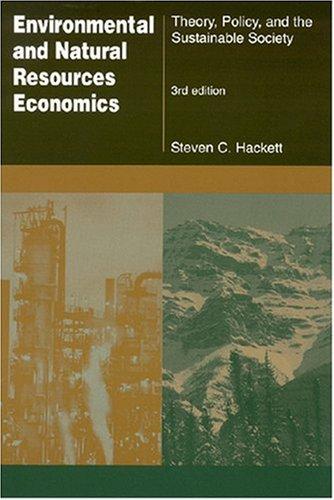6. Spreadsheet simulation (more advanced): Suppose that demand is given by P = a bQ, private-cost...
Question:
6. Spreadsheet simulation (more advanced): Suppose that demand is given by P = a – bQ, private-cost supply is given by P = c + dQ, and marginal external cost equals “e.”
a. Solve for the algebraic “free market” equilibrium price and quantity
(P#, Q#), total external cost, deadweight social loss, and true net gains from trade. These are found using the private-cost supply curve and the demand curve, and are “reduced-form” solutions described entirely as algebraic expressions of parameters
a, b,
c, and
d. Place these labeled equations in your spreadsheet.
b. Solve for the algebraic “socially optimal” equilibrium price and quantity
(P*, Q*) and true net gains from trade. Assume that negative externalities are fully internalized and offset by a Pigouvian tax that is used to compensate those harmed by pollution, and to restore the environment.
These are found using the social-cost supply curve (private cost
+
e) and the demand curve, and are “reduced-form” solutions described entirely as algebraic expressions of parameters
a, b,
c, and
d. Place these labeled equations in your spreadsheet.
c. Using the following parameters (a = 2000, b = 1, c = 100, d = 2, and e =
300), plot demand, social-cost supply, and private-cost supply in a diagram for different values of price and quantity in a fully labeled diagram.
Provide a brief narrative economic interpretation of the two different equilibria shown in your diagram.
d. For the parameter values in 6c above, derive the numerical values for P#, Q#, P*, Q*, total external cost, deadweight social loss, and true net gains from trade, using the equations in 6a and 6b.
e. Perform sensitivity analysis on deadweight social loss by varying the parameter value for “e” (e = 100, 300, 500). Provide a brief narrative economic interpretation.
Step by Step Answer:

Environmental And Natural Resources Economics Theory Policy And The Sustainable Society
ISBN: 9780765614728
3rd Edition
Authors: Margaret Ray ,David A. Anderson






